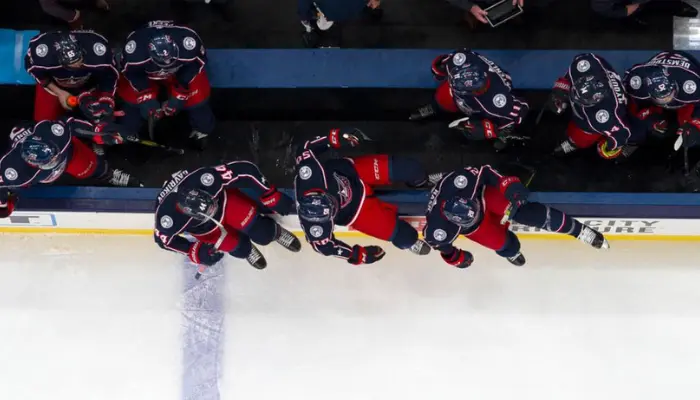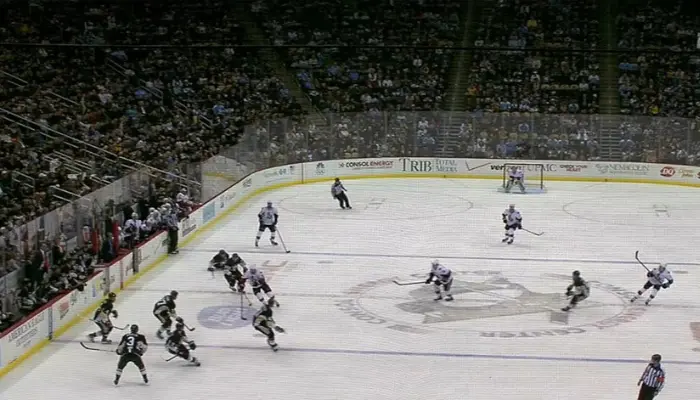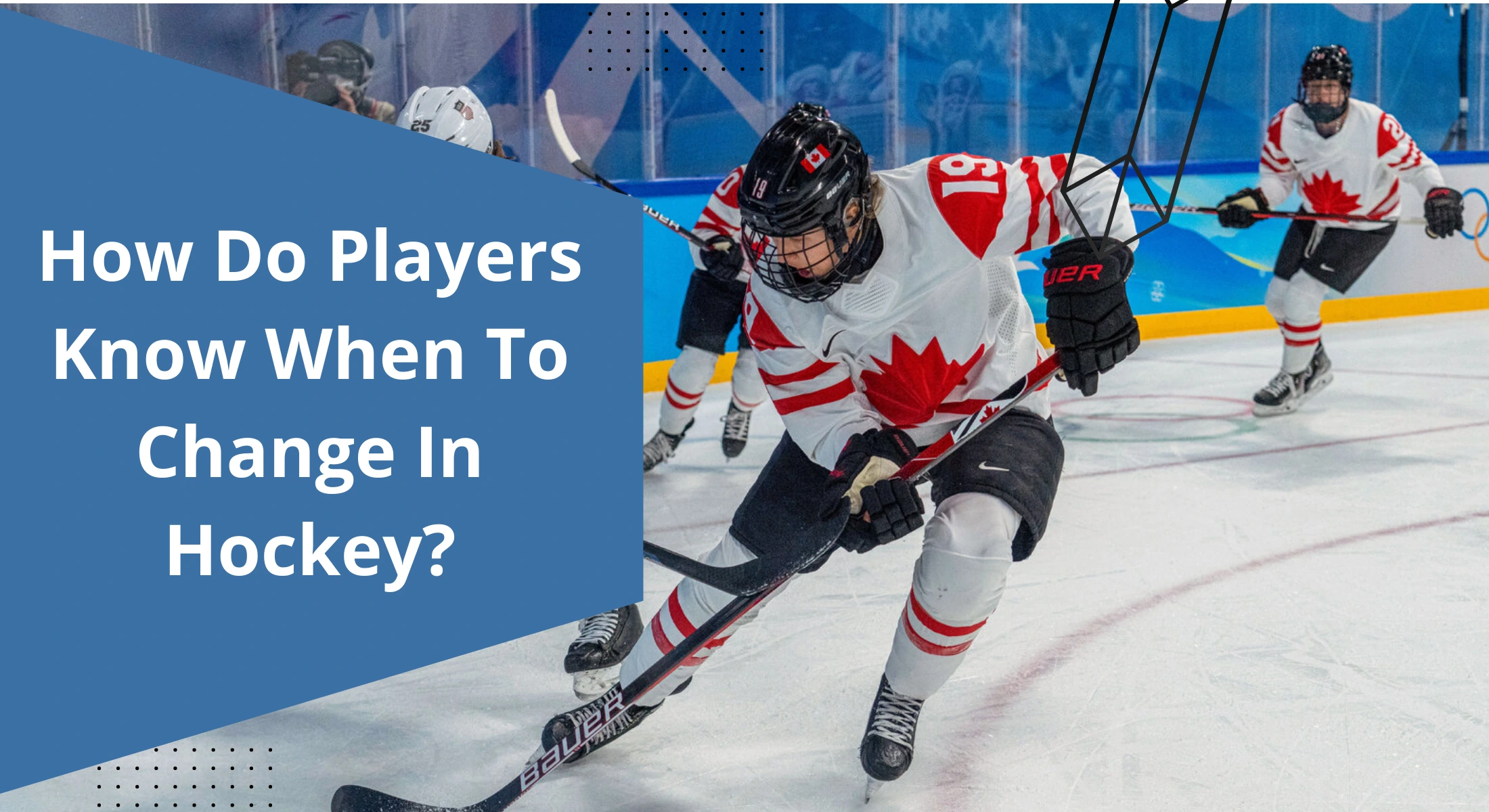Ice hockey is one of the quickest team games in the world and it is extremely distinctive from the other games. You will note when watching a hockey game that players stick to a “pattern” when switching lines. They all endure a time-based modification that occurs throughout the game.
How do hockey players know when to change lines? The hockey team knows when to switch depending on a variety of aspects. It includes the duration of their shift, switching as a line with their teammates, effective alignments against their opposition, and only switching when it won’t lead to a goal opportunity.
Different factors let the players change the lines when they come to the rink. Let’s talk about it.
Players change off after about 30-45 seconds
In the NHL, overall, a turn of a team lasts 45 seconds. A team’s efficiency will begin to decrease after 45 seconds if they do not leave the ice. As hockey requires a lot of energy and strength, so you will have to play at a high level of exertion before you take a break.

Unquestionably, these individuals can maintain their performance for 45 to 60 seconds. They have been playing this game for years and taking so many rounds. Due to this, they have an understanding of when their turn is about to finish.
They will be following the puck and will rapidly become exhausted. So, players on the penalty shot will try to change their shift after every 30 seconds. In other words, a player will automatically know when to switch because of their extra strength and how quickly it drains out after 30-45 seconds.
Players change off when their Linemates Change
When their linemates switch off, teams will automatically change. The left-wing, center and right-wing are the three attackers that will be playing together. Left and right defenders will make a pair to form the opponent’s playing team.
Shifting off as a full offensive line or defensive line is most commonly used. The players were paired together for a purpose by the trainers, and different lines will have various purposes.

For example, the four offensive lines can be divided into four categories such as checking/energy line, defensive line, highest scoring row, and second scoring row.
The third line’s purpose is to prevent the other game’s leading row. The fourth line’s role is to provide strong puck possession and pace for the other groups. Thus, the top 2 rows are in charge of scoring goals.
So, you will have to move off together with your linemates. These groups will enter and exit the rink with each other as allowed by the game. It is because the trainers have grouped them for a particular purpose.
Related Article: Why do hockey players tape their sticks?
Players change off and on as part of the strategy of the game
To pair up against the players of the opposing team, players also come on and go off the field. For example, a forward group and a defense group with an attacking approach will be placed against the main offensive squad of the opposing side.

The players will switch off the rink and the defensive team for defensive positioning will go. They won’t spend time utilizing your greatest attacking team to compete against the other squad’s greatest attacking line.
This mostly occurred with the squad’s top attacking team. They will move on as soon as it is secure to do so to compete against the top offensive group. This is a smart approach to try and contain the best attacking players on the other squad.
Players change off only when it is safe too
When it is secure to move on, a player will do so. Safe means not creating a scoring opportunity for the opposing side when you go to the sidelines to find a replacement. Players won’t alter their behavior unless they are confident that doing so won’t affect their team side.
This typically indicates that the play is as far away from your goalie as feasible on the opposing team’s side. This is the reason you will see players skate to the red line, throw the puck in, and then switch lines several times per match.

They must cross the red line to prevent dropping the puck, and once they do, they throw it far into the goal of their opposition. Players don’t always switch positions in a row. Depending on how a change is going, only one or two players will be changed at once.
For example, a row might become stuck in its area, and when the puck crosses the blue line, it will offer only enough space for one or two skaters to switch positions safely.
Players change off only when it is safe to change off
One aspect about line switches that coaches will highlight is that poor line changes result in scores against the opponents. NHL players are too skilled for your club to make bad line alterations without facing the consequences.

Your squad will miss scoring opportunities if you make poor line moves. Although you won’t see this in the majority of games, it can occur regularly which is not uncommon.
Changing Lines at recreational levels
Many features of switching lines at lower ranks of hockey are similar to those in the NHL, but there are some distinctions as well. The distinctions are given below:
- Buzzer: Many of the moves in hockey’s initial phases are planned. A rotation will run for two minutes, after which all players will be instructed to leave the ice by a beep.
- Coaches: Trainers will use their time to remove individuals more commonly. Coaches ensure that each player receives an equal amount of game time. Hockey players at a greater level do not receive equal game time.
- Pick-up or adult Hockey: The games can be played in teams or just among friends. Nobody sets shift duration guidelines for these sports. Thus, you must rely on the system to perform a reasonable change of roughly a minute. You must spend your minute working hard on the ice before leaving.
Conclusion: How do Hockey Players Know When to Change Lines?
All the players on the rink are trained to shift the line after every 45 to 60-second shift. They usually play hard, so they change their lines. Now you won’t ask how hockey players know when to change lines.


